More than 46 million homes in the U.S. include a cat, showcasing their popularity as beloved pets. However, for individuals with allergies, the dream of cat companionship can often be overshadowed by sneezing, itching, and other allergic reactions. If you’re among those who adore cats but dread the allergy symptoms, you might be wondering if there’s a compromise. The good news is that while truly “hypoallergenic” cats don’t exist, certain cat breeds are known to produce fewer allergens, potentially making them a better fit for allergy sufferers.
Understanding Hypoallergenic Cat Breeds
It’s crucial to clarify that the term “hypoallergenic” is somewhat misleading when it comes to cats. All cats, regardless of breed, produce allergens. These allergens are proteins primarily found in cat dander (dead skin flakes), saliva, and urine. The major cat allergen is called Fel d 1, and it’s this protein that triggers allergic reactions in sensitive individuals.
So, what makes some cat breeds “hypoallergenic”? These breeds typically produce lower levels of Fel d 1 or shed less, resulting in fewer allergens being dispersed into the environment. This doesn’t eliminate allergies entirely, but it can significantly reduce symptoms for some people. It’s essential to understand that individual reactions vary, and spending time with a specific breed is always recommended to assess your personal allergy response.
12 Cat Breeds Often Recommended for Allergy Sufferers
If you’re considering welcoming a feline into your home despite allergies, exploring these cat breeds known for being less allergenic could be a great starting point. Remember to always spend time with a cat before adopting to ensure compatibility with your allergies.
1. Siberian
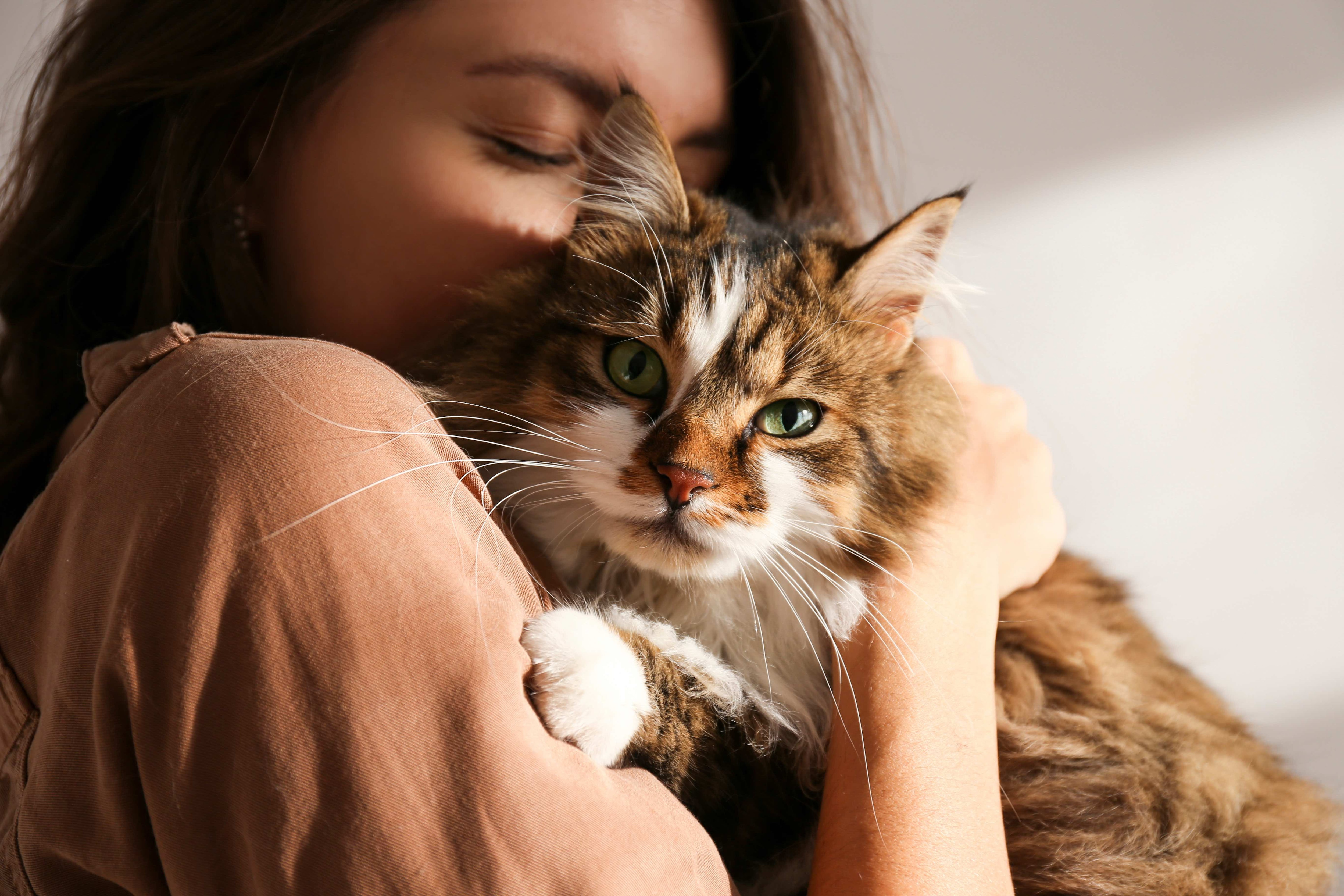 Woman affectionately cuddling a Siberian cat with long brown and white fur
Woman affectionately cuddling a Siberian cat with long brown and white fur
Photo credit: Adobe Stock/Evrymmnt
Siberian cats are often surprisingly cited as a top hypoallergenic breed, especially considering their luxurious, long coats. Despite their thick fur, Siberians produce less Fel d 1 protein in their saliva than many other breeds. This lower production can translate to fewer allergens being spread through grooming and dander. Beyond their allergy-friendly reputation, Siberians are known for their affectionate, friendly, and playful personalities. They adapt well to family life and are generally good with children and other pets. However, their long coat does require regular grooming to prevent mats and tangles.
2. Siamese
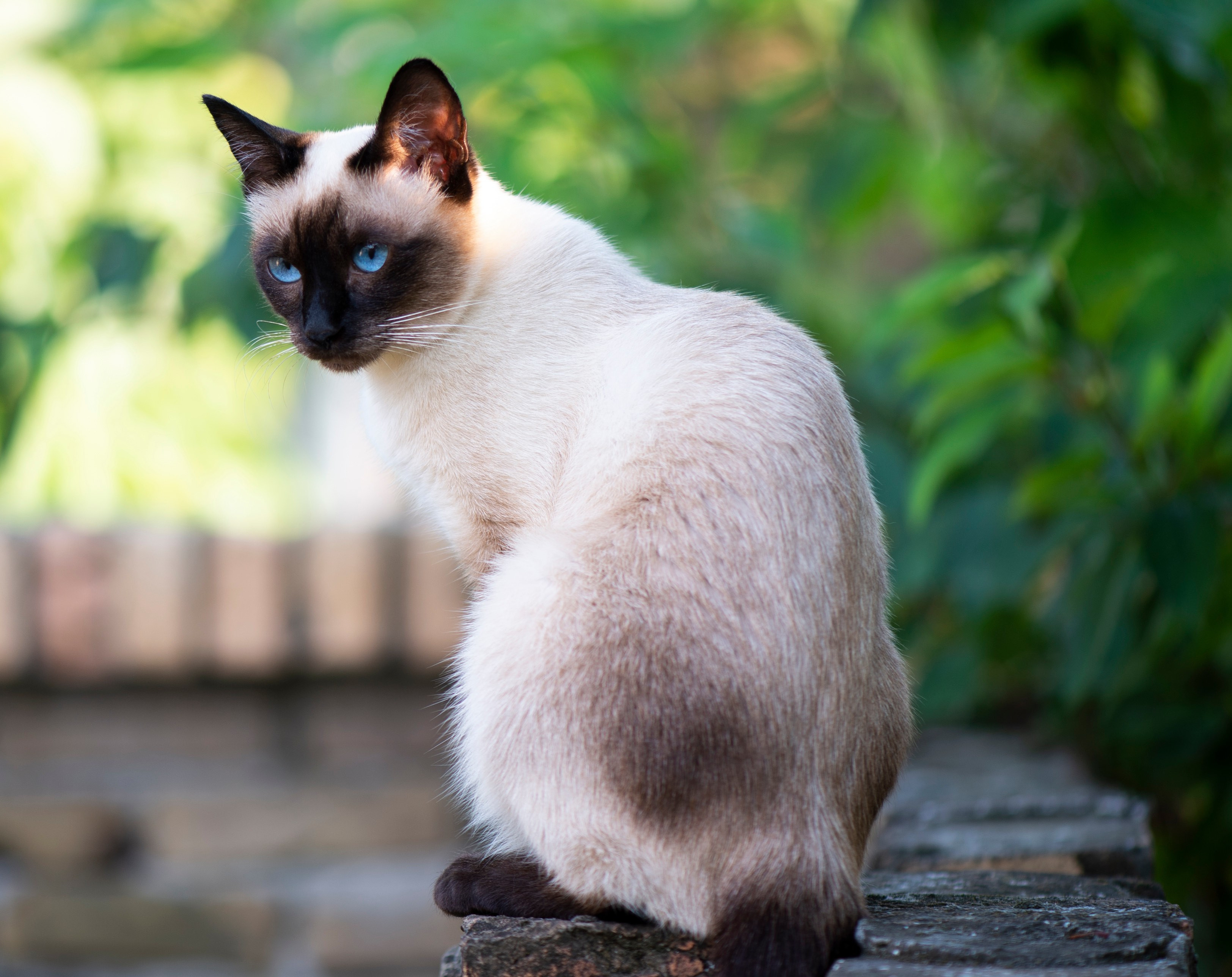 A sleek Siamese cat with blue eyes sitting outdoors
A sleek Siamese cat with blue eyes sitting outdoors
Photo credit: Adobe Stock/Vesna
The elegant Siamese cat is another breed frequently mentioned in the context of hypoallergenic cats. Their short, fine coat sheds minimally compared to many breeds, reducing the amount of allergen-carrying hair dispersed around your home. While no cat is truly non-shedding, the Siamese’s low shedding nature contributes to a potentially lower allergen environment. Siamese cats are renowned for their intelligence, vocal nature, and strong bonds with their owners. They are active and playful, requiring attention and interaction. They are often described as demanding of affection and might not be the best choice for households that are frequently empty.
3. Bengal
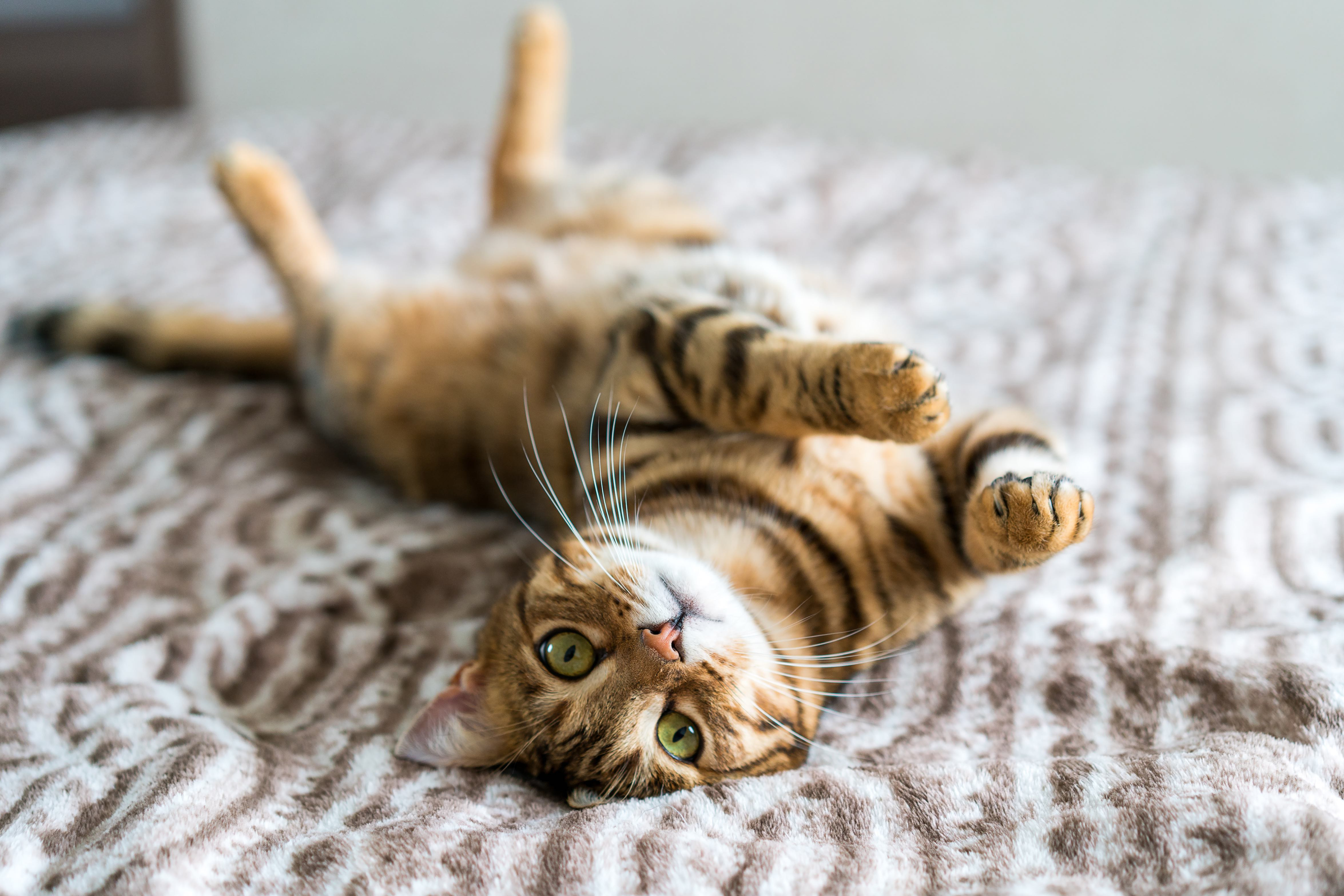 Bengal cat lying on its back on a bed, exposing its spotted stomach
Bengal cat lying on its back on a bed, exposing its spotted stomach
Photo credit: Adobe Stock/ingusk
Bengal cats, with their striking spotted coats reminiscent of their Asian Leopard Cat ancestry, are considered a unique hypoallergenic breed. Their short, dense coat sheds less than many other breeds, contributing to fewer allergens. Bengals are known for their energetic and intelligent nature. They are curious, playful, and require a lot of stimulation. Their intelligence means they can be trained, but also that they can be mischievous if bored. It’s worth noting that some areas have regulations or restrictions on Bengal ownership due to their wild ancestry.
4. Russian Blue
 Russian Blue cat gently headbutting a man's forehead
Russian Blue cat gently headbutting a man's forehead
Photo credit: iStock/Drazen_Hypoallergenic
Russian Blue cats are cherished for their striking silver-blue coats, gentle personalities, and quiet demeanor. They are also considered to be a good choice for allergy sufferers. While they do have a dense, plush double coat, Russian Blues produce less Fel d 1 protein. They are also relatively low-shedding, further reducing allergen dispersal. Russian Blues are known for being affectionate with their families but can be initially shy around strangers. They thrive in calm environments and appreciate a predictable routine.
5. Sphynx
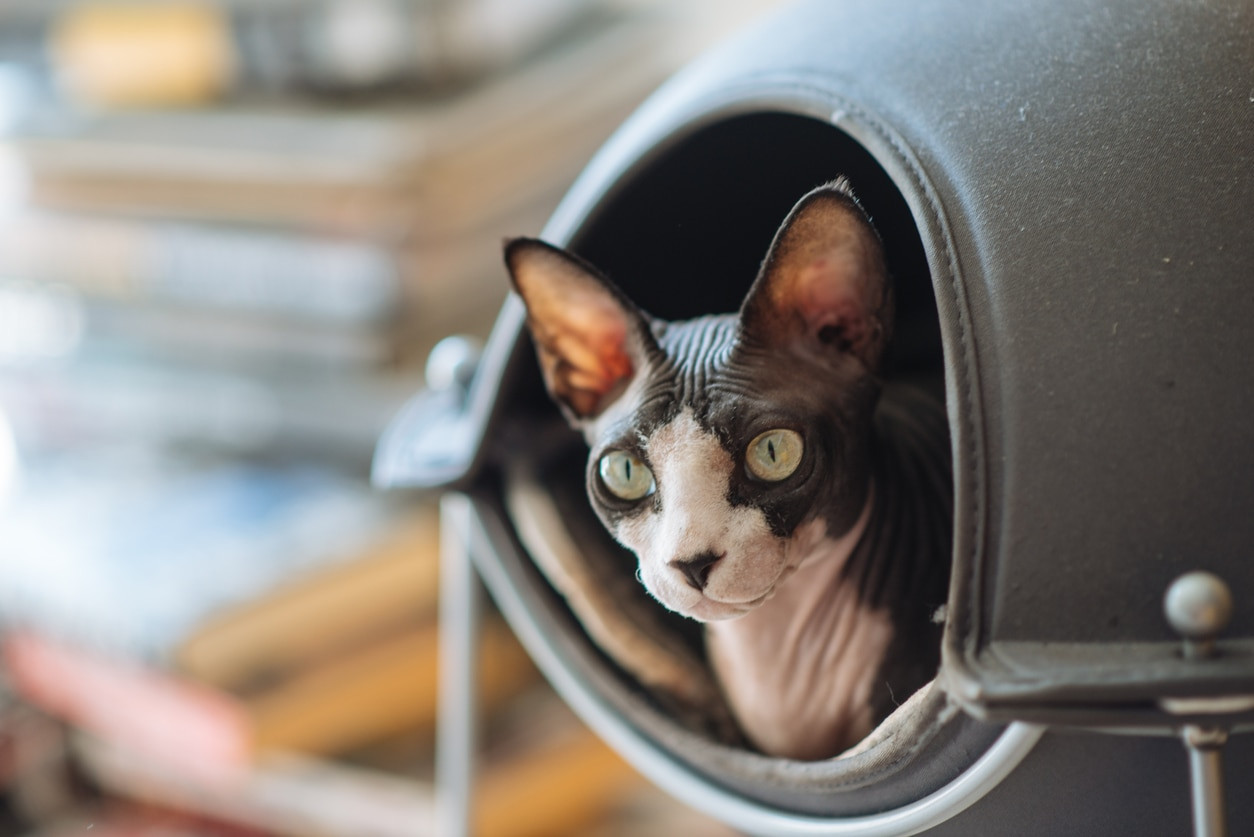 A black and pink Sphynx cat looking out from a covered cat bed
A black and pink Sphynx cat looking out from a covered cat bed
Photo credit: iStock/Drazen_
The Sphynx cat is perhaps the most visually distinct breed on this list, instantly recognizable for their lack of fur. Their hairless (or nearly hairless with a fine peach fuzz) coat is the primary reason they are considered hypoallergenic. Without fur to trap dander and saliva, the Sphynx naturally carries fewer allergens on their body and disperses less into the environment. However, it’s important to remember that Sphynx cats still produce allergens in their skin secretions. Sphynx cats are known for their outgoing, affectionate, and often comical personalities. They are very people-oriented and crave attention. Their lack of fur means they require regular bathing to remove skin oils and keep their skin healthy.
6. Devon Rex
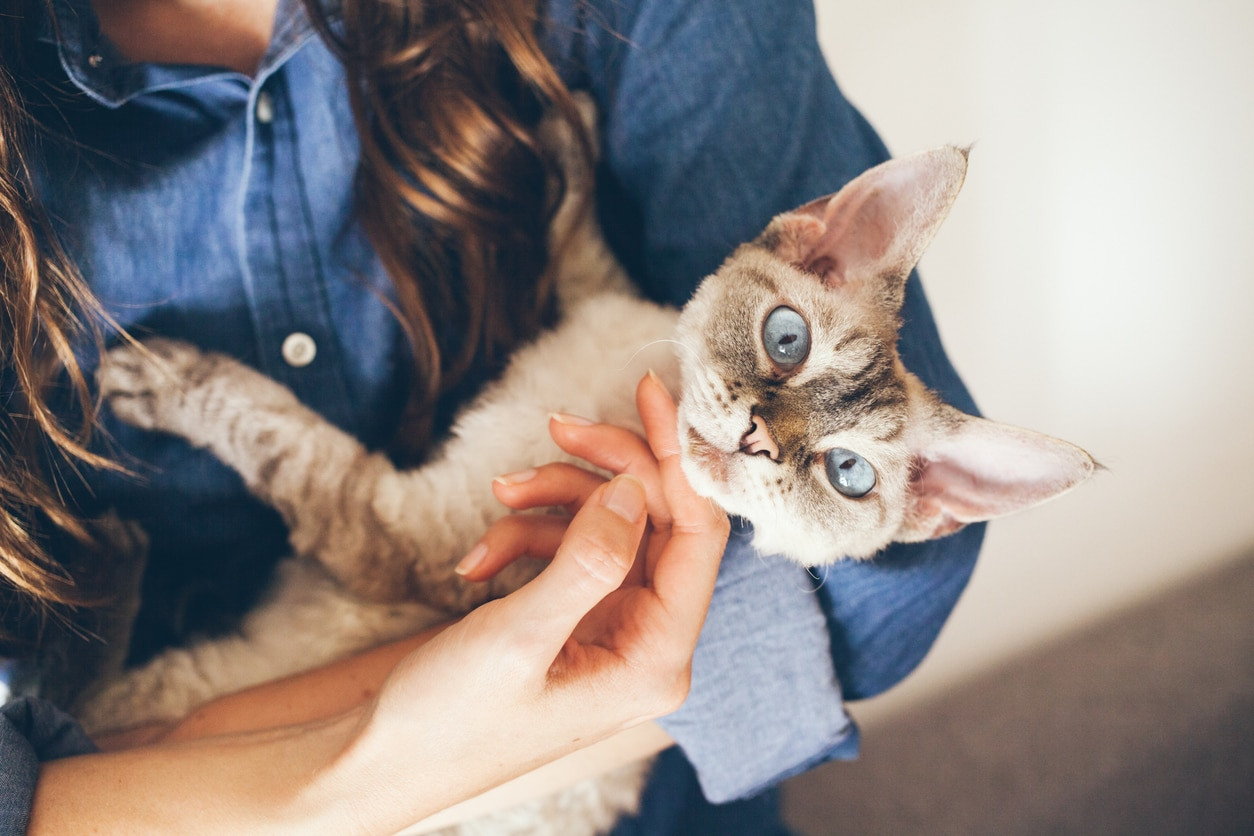 Woman cradling a Devon Rex cat in her arms like a baby
Woman cradling a Devon Rex cat in her arms like a baby
Photo credit: iStock/insonnia
Devon Rex cats are characterized by their distinctive curly, soft coat and large ears, giving them an almost elfin appearance. Their unique coat texture and reduced shedding contribute to their hypoallergenic reputation. Devon Rex cats are intelligent, playful, and highly affectionate. They are known for being very people-focused and enjoy being involved in household activities. They are active cats that need plenty of mental and physical stimulation and thrive on interaction with their families.
7. Cornish Rex
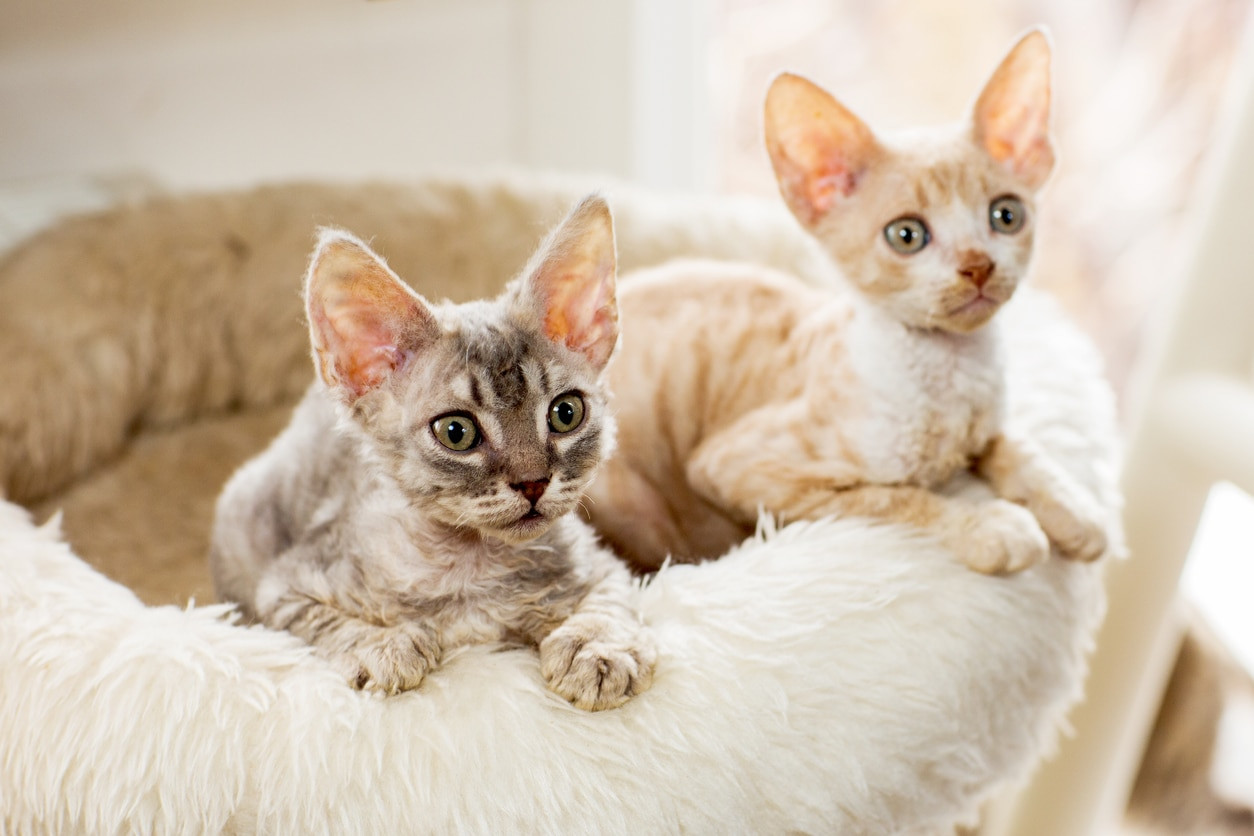 Two Cornish Rex kittens nestled together in a cat bed
Two Cornish Rex kittens nestled together in a cat bed
Photo credit: iStock/Sicha69
Similar to the Devon Rex, the Cornish Rex also boasts a curly coat, but their coat is even shorter and finer, lying close to the body. This minimal coat and reduced shedding contribute to their status as a hypoallergenic breed. Cornish Rex cats are known for being active, playful, and incredibly affectionate. They are often described as “dog-like” in their devotion to their owners and their love of interaction. They are energetic cats that need plenty of playtime and exercise.
8. Javanese
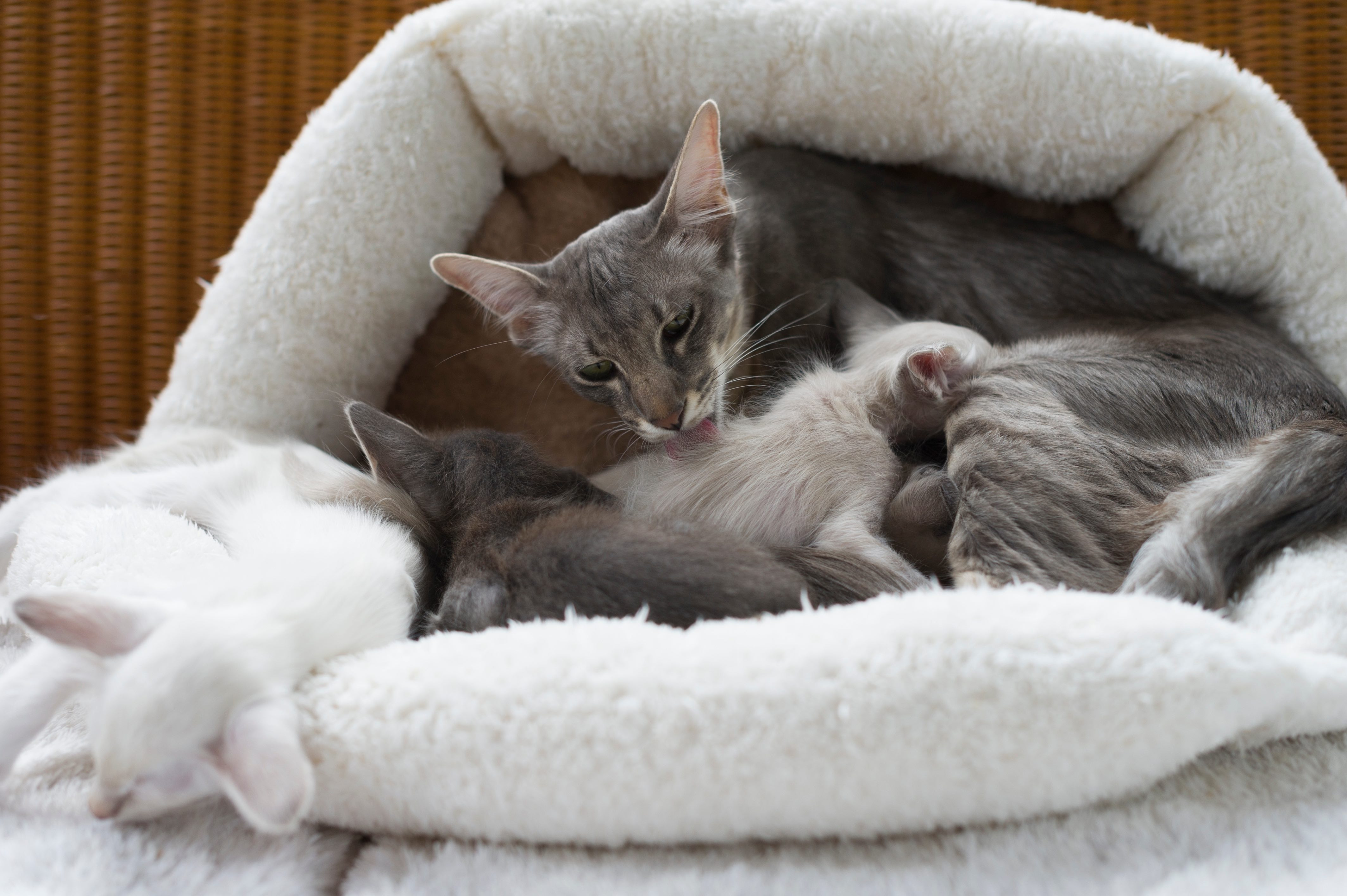 Gray Javanese cat mother grooming her kittens
Gray Javanese cat mother grooming her kittens
Photo credit: Adobe Stock/Heidi Bollich
Javanese cats, while possessing a longer coat than some other hypoallergenic breeds, are still considered a good option for allergy sufferers. They have a single-coat, meaning they lack the dense undercoat that many cats possess. This single coat results in less shedding and fewer allergens. Javanese cats are intelligent, vocal, and very people-oriented. They are playful and enjoy interaction, often forming strong bonds with their families. Despite their longer coat, they are relatively easy to groom but benefit from regular brushing.
9. Balinese
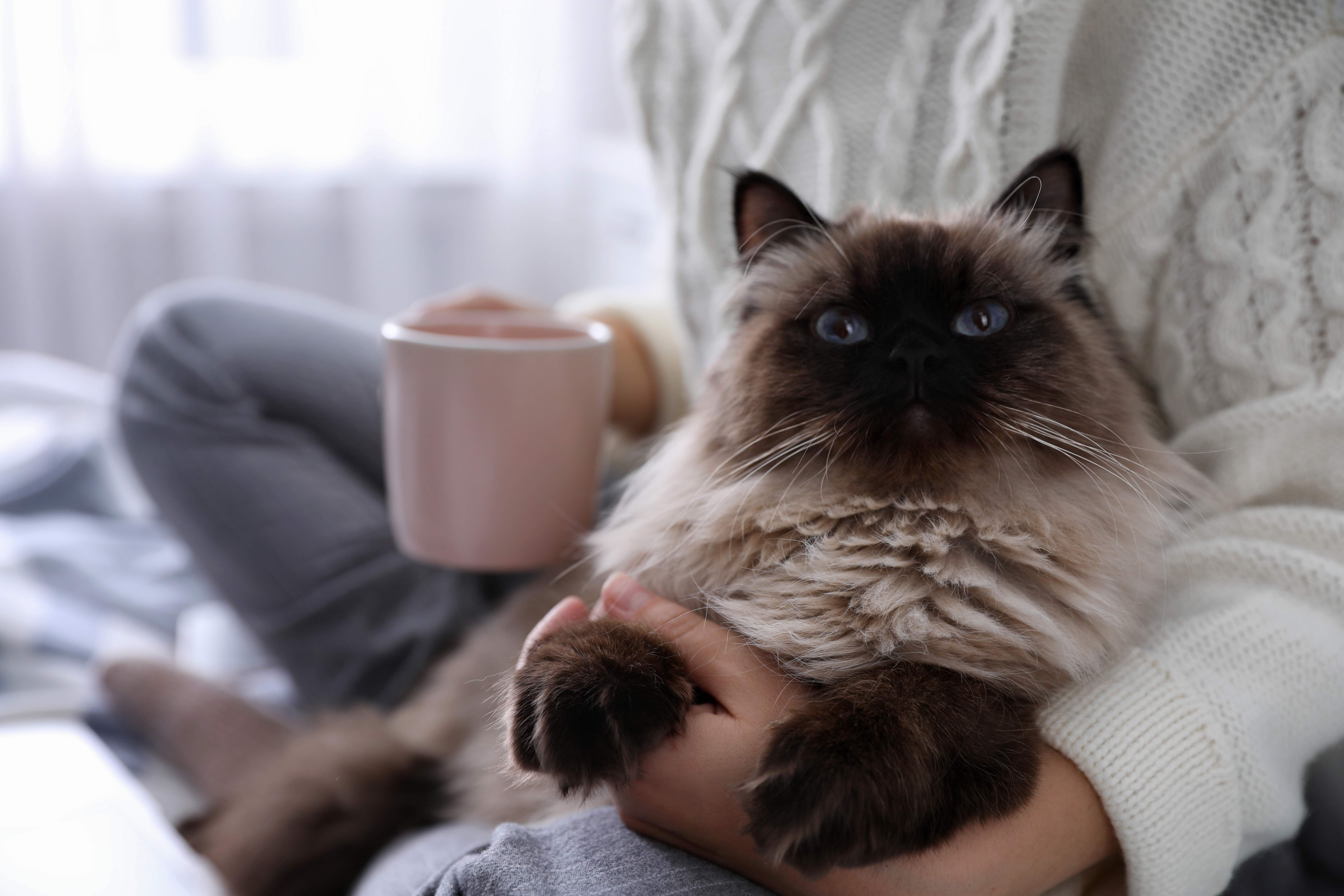 Longhaired Balinese cat snuggling with a woman
Longhaired Balinese cat snuggling with a woman
Photo credit: Adobe Stock/New Africa
The Balinese cat is essentially a long-haired version of the Siamese, sharing many of the same physical and personality traits, including their hypoallergenic qualities. Like Siamese cats, Balinese produce less Fel d 1 protein and have a fine, silky coat that sheds minimally. Balinese cats are intelligent, affectionate, and playful. They are known for being vocal and enjoy interacting with their families. Despite their longer coat, they are relatively low-maintenance in terms of grooming.
10. Oriental Shorthair
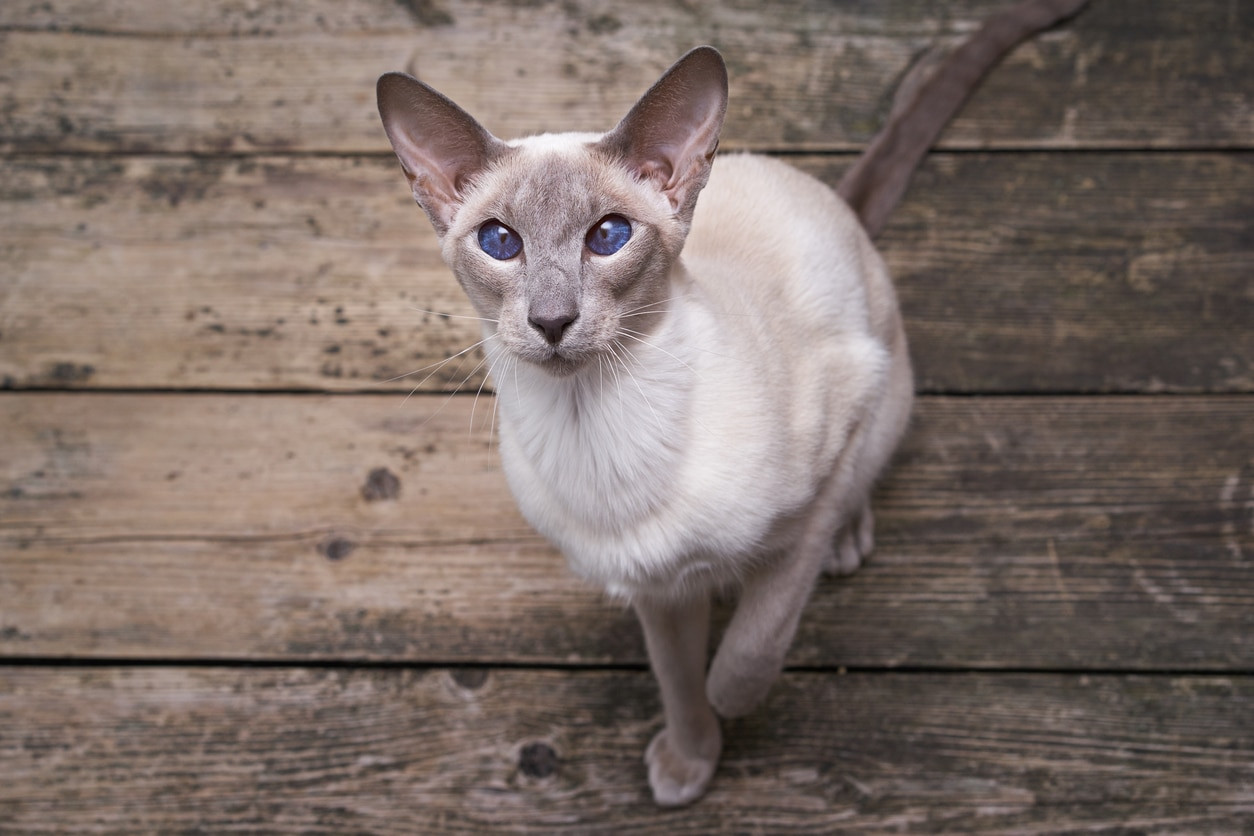 Gray and white Oriental Shorthair cat looking up at the camera
Gray and white Oriental Shorthair cat looking up at the camera
Photo credit: iStock/Leschenko
Oriental Shorthair cats are striking and slender felines with large ears and almond-shaped eyes. Their short, fine coat requires minimal grooming and contributes to their hypoallergenic nature due to reduced shedding. Oriental Shorthairs are intelligent, curious, and very active cats. They are known for being playful and entertaining, and they thrive on attention and interaction with their owners. They are also known for their distinctive vocalizations, sometimes described as a goose-like honk.
11. Burmese
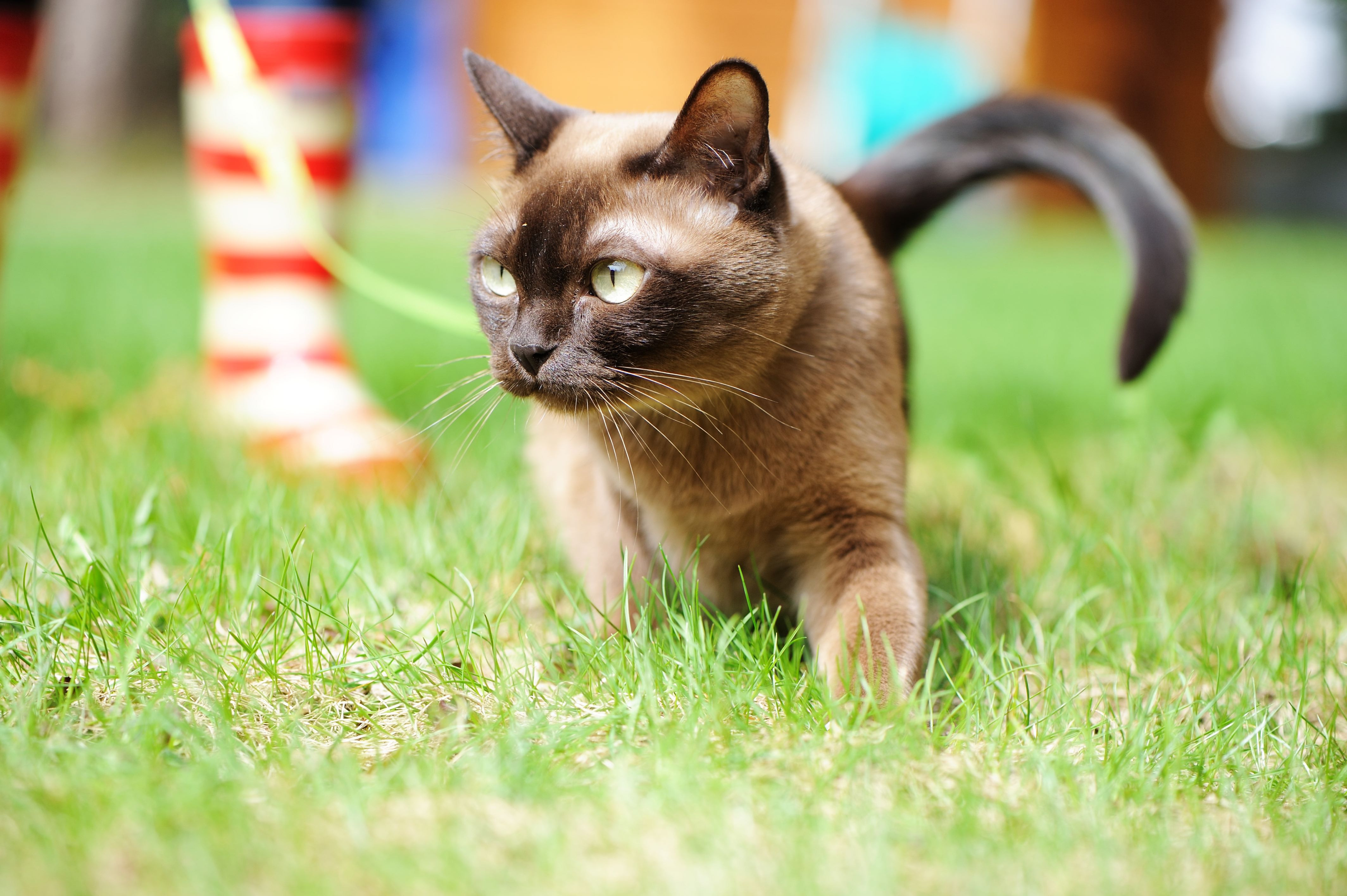 Burmese cat walking outdoors on a leash and harness
Burmese cat walking outdoors on a leash and harness
Photo credit: Adobe Stock/Alinute
Burmese cats are compact and muscular with a short, satin-like coat. Their short coat and low shedding tendencies make them a suitable choice for allergy sufferers. Burmese cats are known for being affectionate, intelligent, and playful. They are people-oriented and enjoy being part of the family. While they are active, they are also known to be adaptable and generally well-behaved.
12. Tonkinese
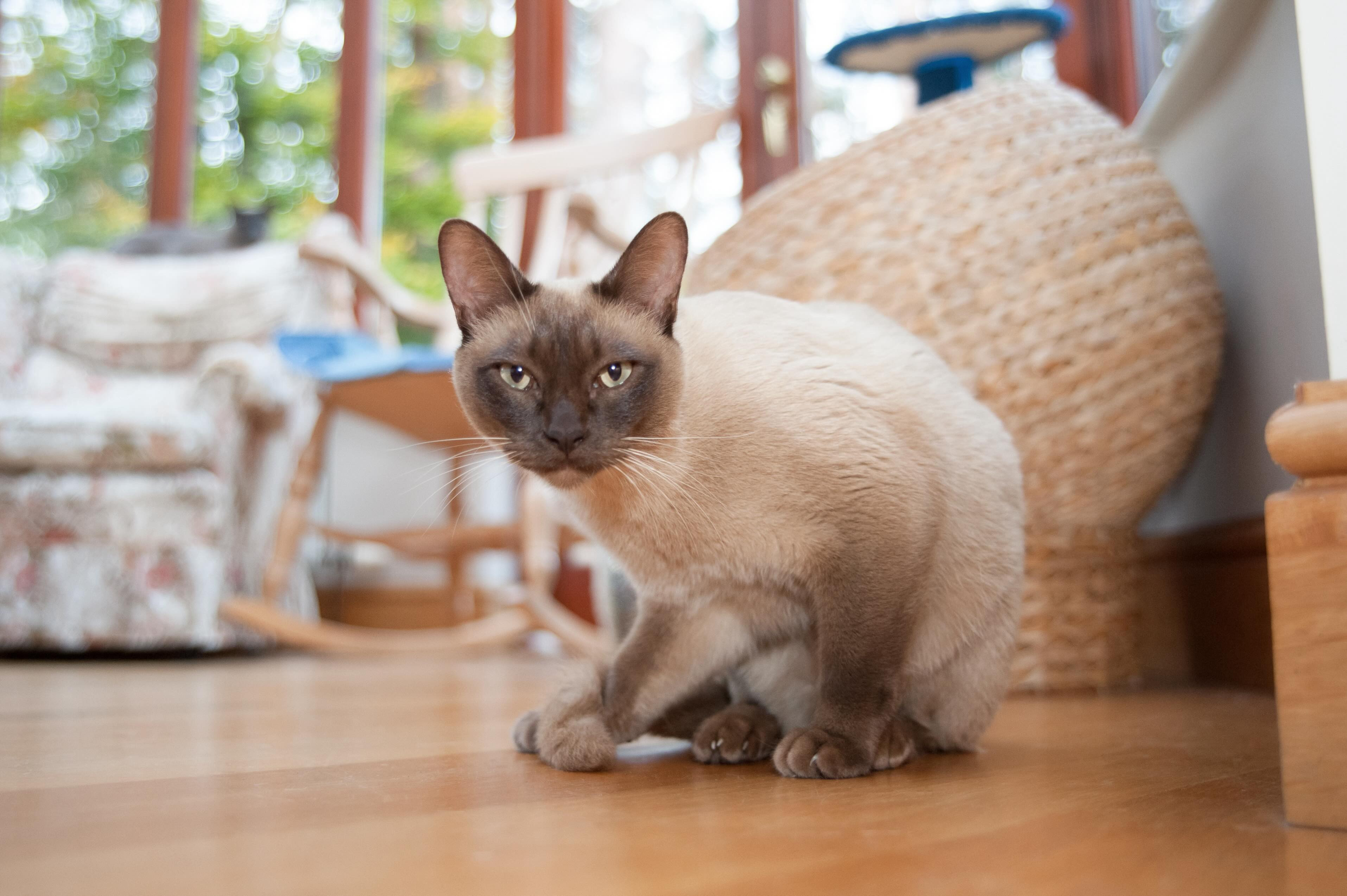 Champagne Tonkinese cat sitting on the floor, looking directly at the camera
Champagne Tonkinese cat sitting on the floor, looking directly at the camera
Photo credit: Adobe Stock/Steve Mann
Tonkinese cats are a hybrid breed, resulting from crossing Siamese and Burmese cats. They inherit desirable traits from both parent breeds, including their hypoallergenic potential. Tonkinese cats have a short, fine coat that sheds minimally. Tonkinese cats are known for being intelligent, playful, and affectionate. They are social cats that enjoy being around people and are known for their vocal nature and engaging personalities.
Tips for Adopting a Hypoallergenic Cat
Choosing a breed known for being hypoallergenic is just the first step. Managing cat allergies effectively involves several strategies to minimize allergen exposure.
Do Thorough Research
Before bringing any cat home, especially if allergies are a concern, in-depth research is crucial. Learn about different breeds, visit breeders or shelters, and ideally spend time with the specific cat you are considering. Personal interaction is the best way to gauge your allergic reaction to an individual cat.
Consult an Allergy Specialist
If you have significant allergies, consulting with an allergist is highly recommended. They can perform allergy testing to pinpoint your specific triggers and advise on managing your symptoms. They can also offer guidance on medication or other treatments that can help you live comfortably with a cat.
Maintain a Clean Home Environment
Regular cleaning is essential in reducing allergens in your home. Vacuum frequently, ideally with a HEPA filter vacuum, and consider steam cleaning carpets and upholstery. Wash bedding, curtains, and pet bedding regularly. Dust frequently with a damp cloth to trap allergens rather than spreading them.
Discuss Diet with Your Veterinarian
Innovative cat food options, like Purina® Pro Plan® LIVECLEAR®, are formulated to reduce the major allergen Fel d 1 in cat saliva. This dietary approach can significantly decrease the amount of active allergen a cat produces. Consulting with your veterinarian can help determine if such a diet is appropriate for your cat and could be beneficial for your allergies.
FAQs About Low-Shedding Cats
Are there truly non-shedding cats?
While breeds like the Sphynx are often referred to as non-shedding due to their lack of fur, it’s more accurate to say they are low-shedding. Even hairless cats still produce dander and skin oils that can carry allergens. No cat is completely non-shedding in the sense of producing absolutely no loose hair or skin cells.
Can any cat be 100% hypoallergenic?
No, the concept of a 100% hypoallergenic cat is a myth. All cats produce allergens. However, the breeds listed above, due to factors like lower Fel d 1 production or reduced shedding, are considered less allergenic and can be a more compatible choice for individuals with cat allergies.
WRITTEN BY
Nicole Zittritsch, LVT, BSc, MPH
Veterinarian Technician
